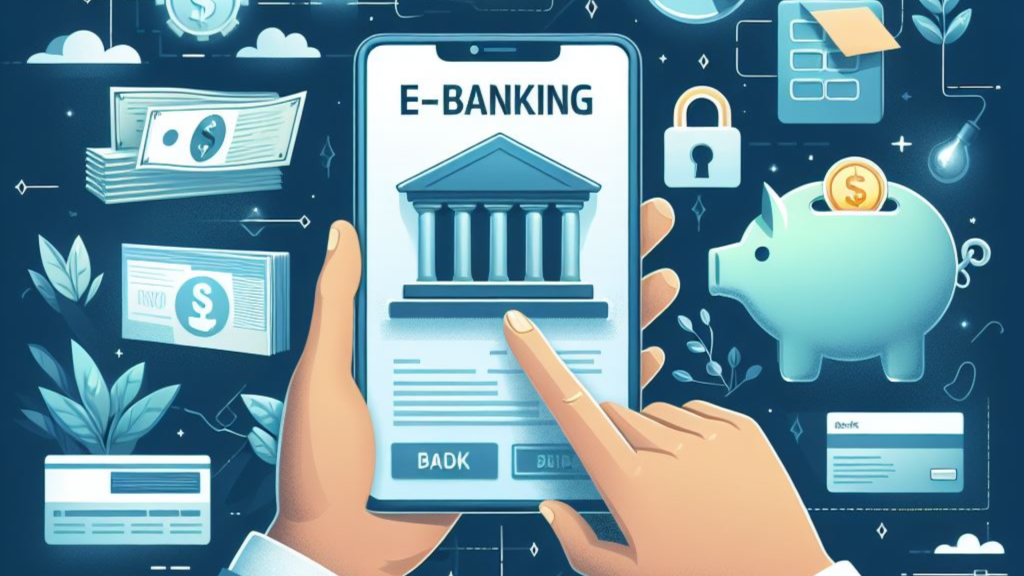E-Banking Digital Banking: The rapid pace of change in the world is driven significantly by technology. An examination of technology and its applications reveals its pervasive influence in almost every aspect of our lives. The adoption of information technology has led to the electronic handling of numerous activities both at home and in the workplace. Gradually, the Indian consumer is embracing internet banking as part of this technological evolution.
ATM and online transactions are gaining popularity, and customers have a clear preference for simplicity in net banking. The banking sector is aligning itself with technological advancements to meet customer expectations. Electronic banking, or online banking, is a broad term encompassing the delivery of banking services and products through electronic channels, including the telephone, internet, and cell phone. The concept and scope of e-bankin. are continually evolving, providing an efficient payment and accounting system that significantly improves the speed of delivering banking services.
इस पोस्ट में क्या है ?
Understanding E-Banking
Electronic banking, a prominent facet of global E-commerce, is commonly referred to as E-bankin. in the banking industry. Also known as “Virtual Banking” or “Online Banking,” E-bankin. emerges from the evolving expectations of bank customers. It revolves around information technology-based banking, utilizing a Computer-Controlled System for service delivery without requiring customers to visit physical bank premises. Online banking, in essence, involves modern technology facilitating transactions between clients and the bank. The advancement in computer capabilities and technology has greatly benefited online banking, enhancing its accessibility and client-friendliness. Digital Banking
Evolution of E-Banking
The technological journey in banking commenced with punched card machines, gradually progressing to online real-time systems and improved telecommunications during the late 1970s and 1980s. This period marked a revolution in banking with the advent of “convenience banking,” bringing banking services to the customer’s doorstep. The 1990s witnessed the rise of distributed computing technologies and Relational Database Management Systems, transforming the banking landscape. Traditional banking methods transitioned into virtual or E-bankin, mirroring the shift from gunpowder to nuclear power. The transformation involved moving from personalized, time-consuming services with limited access to real-time transactions on an integrated platform, accessible at all times. Digital Banking

Intense competition prompted banks to rethink their operations, leading to reinvention and enhancement of products and services for greater cost-effectiveness. E-bankin, driven by technology, allowed banks to explore alternative practices at lower costs. The increasing adoption of electronic banking products and services reflects the necessity to cater to a computer-literate customer base. Banks failing to provide electronic banking options risk obsolescence. The ongoing evolution introduces new products and services poised to redefine our perspectives on money and the monetary system. Digital Banking
How is E-Banking different from traditional banking?
E-Bankin., or electronic banking, involves the delivery of banking services through electronic channels like the internet, phone, and mobile devices, eliminating the need for physical visits to a bank branch. Traditional banking, on the other hand, relies on in-person transactions.
What are the key benefits of E-Banking?
E-Banking offers convenience, accessibility 24/7, faster transactions, and the ability to manage accounts remotely. It also provides features like online bill payment, fund transfers, and real-time account monitoring.
Is E-Banking secure?
Banks implement robust security measures, including encryption and multi-factor authentication, to ensure the security of E-Banking transactions. However, users are advised to follow best practices, such as using secure networks and regularly updating passwords.
Can I access E-Banking from anywhere?
Yes, E-Banking allows users to access their accounts from anywhere with an internet connection. This flexibility enhances the convenience of managing finances on-the-go.
Are there any charges for using E-Banking services?
Banks may have different fee structures for E-Banking services. While some basic services may be free, certain transactions or premium features may attract charges. Users should check with their respective banks for specific details.
E-Banking Frequently Asked Questions (FAQ)
Yes, most banks offer mobile banking applications, allowing users to access E-Banking services on their smartphones. These applications are designed for a user-friendly experience on mobile devices.
In case of transaction issues or discrepancies, users should promptly contact their bank’s customer support. Most banks provide dedicated helplines and online support to address and resolve E-Banking-related concerns.
Banks typically provide a password recovery or reset option on their E-Banking platforms. Users can follow the designated steps to reset their passwords securely. It often involves receiving a verification code on the registered mobile number or email.
Depending on the country’s tax regulations, certain E-Banking transactions, especially those related to home loans or investments, may be eligible for tax benefits. Users should consult with their bank or tax advisor for specific information.
While E-Banking offers convenience, banks typically provide options for customers who prefer traditional banking methods. Users can visit local branches for in-person transactions and assistance.